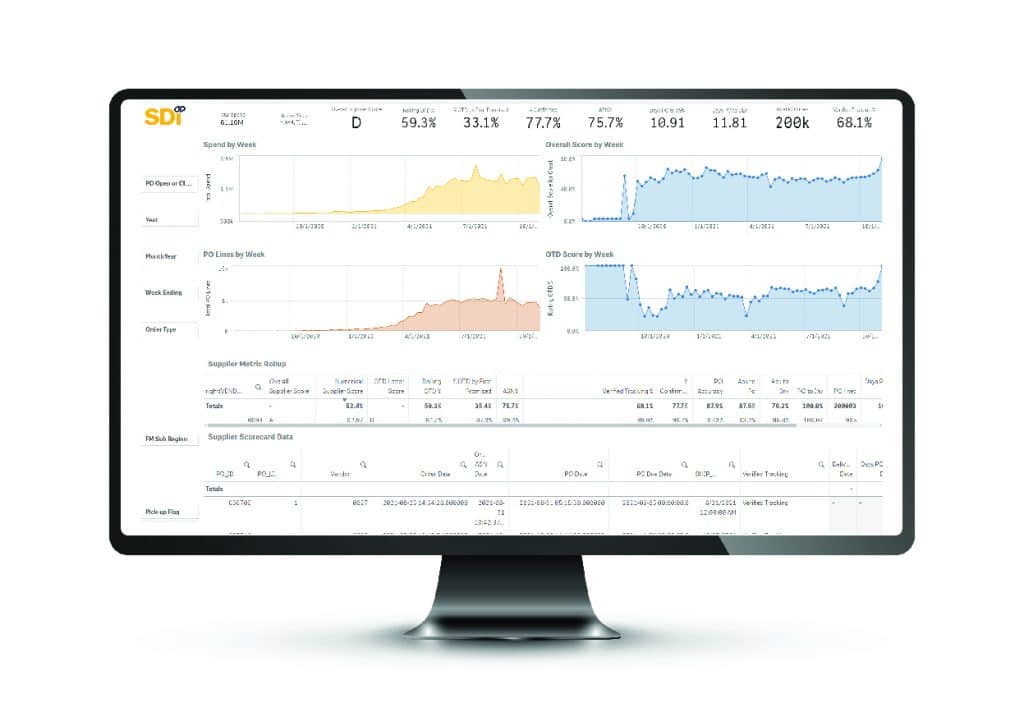In today’s landscape, every minute of unplanned downtime can lead to significant financial losses and production delays. With ongoing supply chain challenges and longer lead times, establishing an effective critical spares management program is not just a best practice—it’s a necessity. This guide will walk you through what critical spares are, why they matter, and how to implement strategies that keep your operations running smoothly.
What Are Critical Spares?
Critical spares are the replacement parts essential for maintaining and repairing your key equipment. These parts are identified based on their role in your operations and their risk profile. In general, critical spares are parts that:
- Exhibit high failure rates or have a limited lifespan: Regular wear, corrosion, or fatigue can make these parts more susceptible to failure.
- Support crucial equipment: Downtime in critical machinery can lead to costly production stoppages.
- Have long lead times: Extended ordering and delivery times can exacerbate the impact of a failure.
- Lack viable substitutes: When a part is unique or highly specialized, finding an alternative isn’t always feasible.
Accurate identification of high-risk parts involves in-depth analysis of equipment reliability data, historical failure patterns, and maintenance records.
The Importance of Effective Critical Spares Management
Avoiding Costly Downtime
Equipment failures can halt production, leading to:
- Lost production capacity: Fixed costs remain even when production slows down.
- Revenue loss: Reduced output translates directly into lost profits.
- Customer dissatisfaction: Late deliveries may incur penalties and damage business relationships.
- Increased repair costs: Expedited repairs and emergency orders are often more expensive.
- Secondary damage: Equipment failures can lead to collateral damage, further impacting operations.
A 2022 survey reported that 78% of manufacturers experienced shutdowns due to a lack of spare parts, underscoring the financial risks of inadequate spares management.
Enhancing Operational Efficiency
By proactively managing your critical spares, you can:
- Reduce lead times: Having the right spares in stock accelerates repairs.
- Improve maintenance planning: Scheduled replenishment and data-driven forecasting ensure parts are available when needed.
- Strengthen vendor relationships: Close collaboration with suppliers helps mitigate risks associated with supply disruptions.
- Leverage technology: Modern tools like predictive maintenance and IoT sensor data can forecast failures before they occur.
Best Practices for Managing Critical Spares
Implementing a robust critical spares program involves several strategic steps:
1. Analyze Equipment and Failure Data
- Track MTBF (Mean Time Between Failures): Use historical data to predict part failures.
- Examine failure modes: Identify which parts are most vulnerable.
- Review maintenance records: Understand past issues to forecast future needs.
2. Collaborate with Vendors
- Understand supply constraints: Work closely with suppliers to get accurate lead times and assess geographic risks.
- Negotiate better terms: Secure volume discounts and favorable delivery schedules.
3. Build Safety Stock
- Buffer inventory: Maintain a safety stock that accounts for 12-18 months of projected demand, especially for parts with long lead times.
- Regularly reassess levels: Adjust stock based on changing operational needs and supplier performance.
4. Implement Advanced Inventory Control Systems
- Automated tracking: Use inventory management software to monitor usage and set automatic reorder triggers.
- Data integration: Integrate your system with maintenance and production schedules for real-time insights.
5. Ensure Proper Storage and Handling
- Follow vendor guidelines: Adhere to recommended storage conditions to prevent damage or obsolescence.
- Optimize storage solutions: Consider climate-controlled environments or specialized shelving for delicate components.
6. Regularly Review and Update Inventory
- Dynamic assessments: Continuously evaluate your inventory in response to equipment upgrades or supplier changes.
- Embrace refurbishing: Where applicable, repair or refurbish used parts to extend their life and conserve inventory.
7. Explore Collaborative and Technological Solutions
- Pooling spares: Consider cooperative arrangements with other companies to share costs and reduce inventory risk.
- Adopt new technologies: Utilize predictive maintenance tools and onsite 3D printing for rapid production of simple parts, reducing dependency on long supply chains.
Technological Advancements Transforming Spares Management
Modern technologies are reshaping how companies manage critical spares:
- Predictive Maintenance: Sensors and advanced analytics monitor equipment health, enabling maintenance teams to address issues before they lead to failures.
- 3D Printing: Onsite manufacturing of certain parts can dramatically reduce lead times for plastic and some metal components.
- IoT and Data Analytics: Real-time data feeds from production lines can trigger automated reordering processes and improve inventory accuracy.
- Digital Twins: Simulating equipment operations helps in understanding wear patterns and planning for spare part needs more accurately.
The Cost of Inadequate Spares Management
Neglecting a robust spares management strategy can result in severe financial and operational impacts:
- Production losses: Every minute of downtime directly affects revenue.
- Increased labor costs: Urgent repairs often require premium labor rates.
- Logistics challenges: Emergency shipments come with higher expediting fees.
- Reputation damage: Frequent delays and equipment failures can tarnish your brand’s reliability.
How SDI Can Help Optimize Your Spares Strategy
At SDI, we work closely with manufacturing and maintenance teams to tailor spares management solutions that fit your unique needs. Our approach includes:
- Risk quantification: Assessing the potential impact of equipment failures on productivity, safety, and revenue.
- Customized procurement: Leveraging an extensive supplier network to ensure that critical spares are always available.
- Process optimization: Establishing streamlined maintenance routines that maximize component life and minimize downtime.
- Cost reduction: Negotiating with suppliers for volume discounts and efficient inventory management to reduce overall expenses.
By integrating these strategies, SDI helps companies maintain operational continuity even amid global supply chain challenges.
Conclusion
Effective critical spares management is a cornerstone of modern manufacturing operations. By analyzing failure data, collaborating with suppliers, maintaining appropriate safety stocks, and embracing technological innovations, companies can significantly reduce the risk of costly downtime. In an era where supply chain disruptions are the norm, investing in a proactive spares management strategy isn’t just smart—it’s essential.
For more insights on optimizing your spare parts inventory and reducing production downtime, contact SDI today and let us help safeguard your operations for the future.





